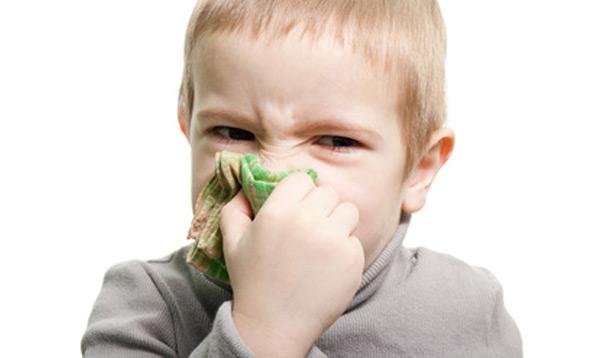
Last year was a banner year in the Foster household: the months of September and October alone saw us through at least six different cold viruses between my two boys. I’m expecting a similar showing this year. After only one week back in preschool—as if on cue—my 4-year-old developed a runny nose.
And so it begins.
If you’re a mom, I know you’ve wiped a tiny red nose or two. And I’m almost positive you’ve glanced at the contents of that tissue. Have you ever wondered what it means?
As a family doctor, I hear this statement a lot from parents: “When the mucus turned green, I knew we had to bring her in. I knew she had an infection.”
Sound about right?
Well, I’m here to report that this commonly-held belief is, unfortunately, false. You may have heard that green nasal discharge is a definite sign of bacterial infection, but it’s not.
When you have a cold, a certain type of white blood cells (neutrophils) flood to the area to fight the virus—these cells contain an enzyme that’s green in color, so if there are a lot of the cells, the mucus will appear green, too. There may also be a bacterial infection, or there may not be. The green colour alone is not a reliable indicator.
In fact, your kid can have perfectly clear mucus and also have a full-blown ear infection or horrendous flu infection.
(While we’re at it, if you’re feeling less than clear on the difference between a cold and the flu, read this.)
Is it a sign of infection when mucus is tinged with brownish or reddish blood? Again, not necessarily. When a nose gets irritated from all that rubbing, blowing, and wiping, the lining just inside the nostril can bleed a little. It’s not a cause for alarm if you see a small amount of blood in nasal mucus, but if you see large amounts of blood, it’s a good idea to visit the doctor.
So if the colour of mucus isn’t terribly reliable, what is a more reliable indicator of a bacterial infection? Symptoms like: fever, lethargy, and a deterioration in symptoms instead of the improvement you would expect after a few days battling a virus—these are all good indicators that it's time to see your doctor.
Now, although mucus may not tell you much about what kind of infection your little one has, I can almost guarantee you're going to be dealing with a lot of it this fall and winter.
Here are some of my suggestions on how to manage cold and flu symptoms (this is what I recommend for patients and what I use at home with my own kids):
 Take a minute to boogie on over to the Boogie Wipes Canada Facebook page and click on “Like.”
Take a minute to boogie on over to the Boogie Wipes Canada Facebook page and click on “Like.”
Once you do you’ll be able to enter their fun Facebook giveaways, get cute craft ideas, and laugh out loud at parenting moments we can all relate to!

This is proudly sponsored by our friends at Boogie Wipes.
www.boogiewipes.com
To find out more and stay connected, visit the Boogie Wipes Canada Facebook Page.